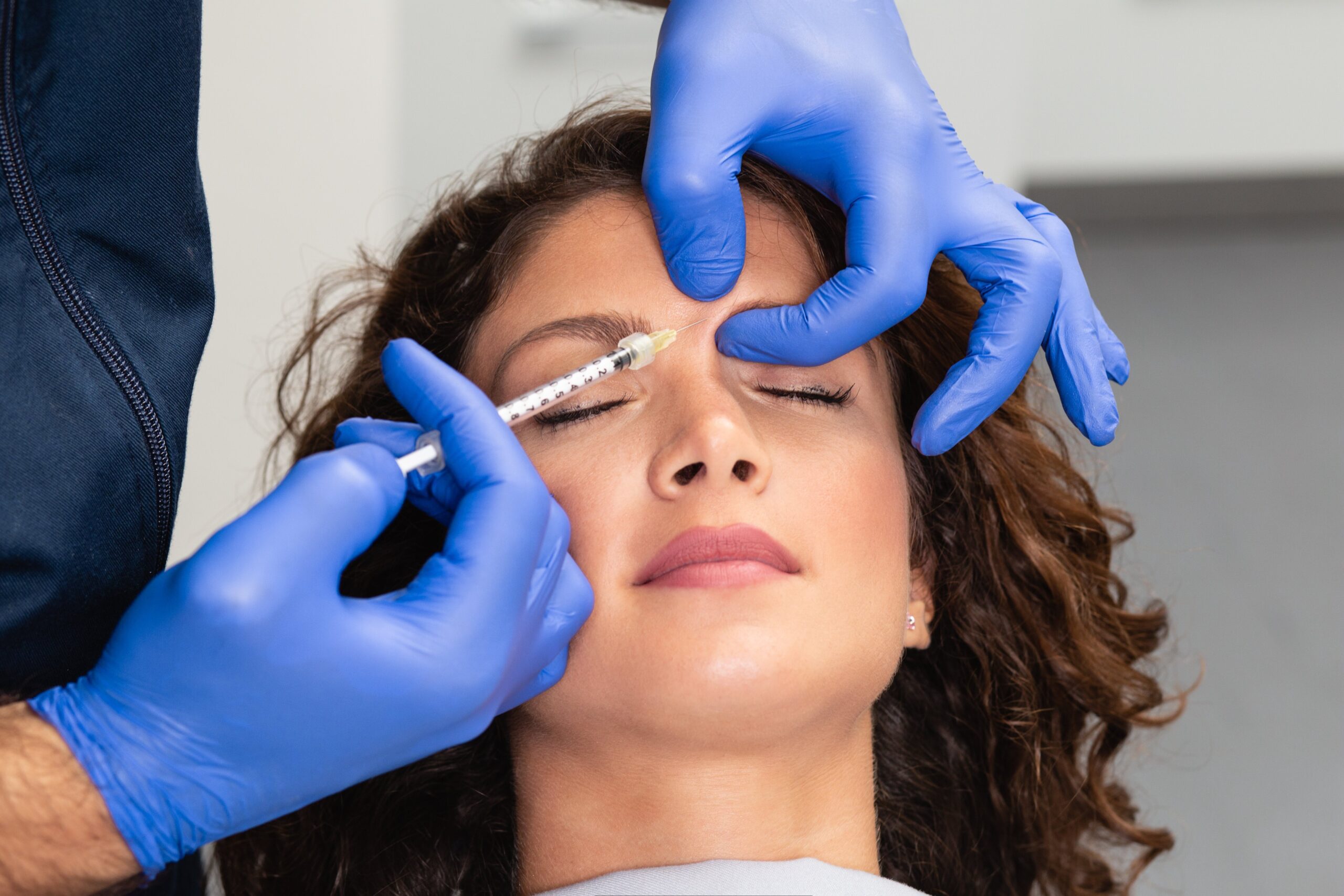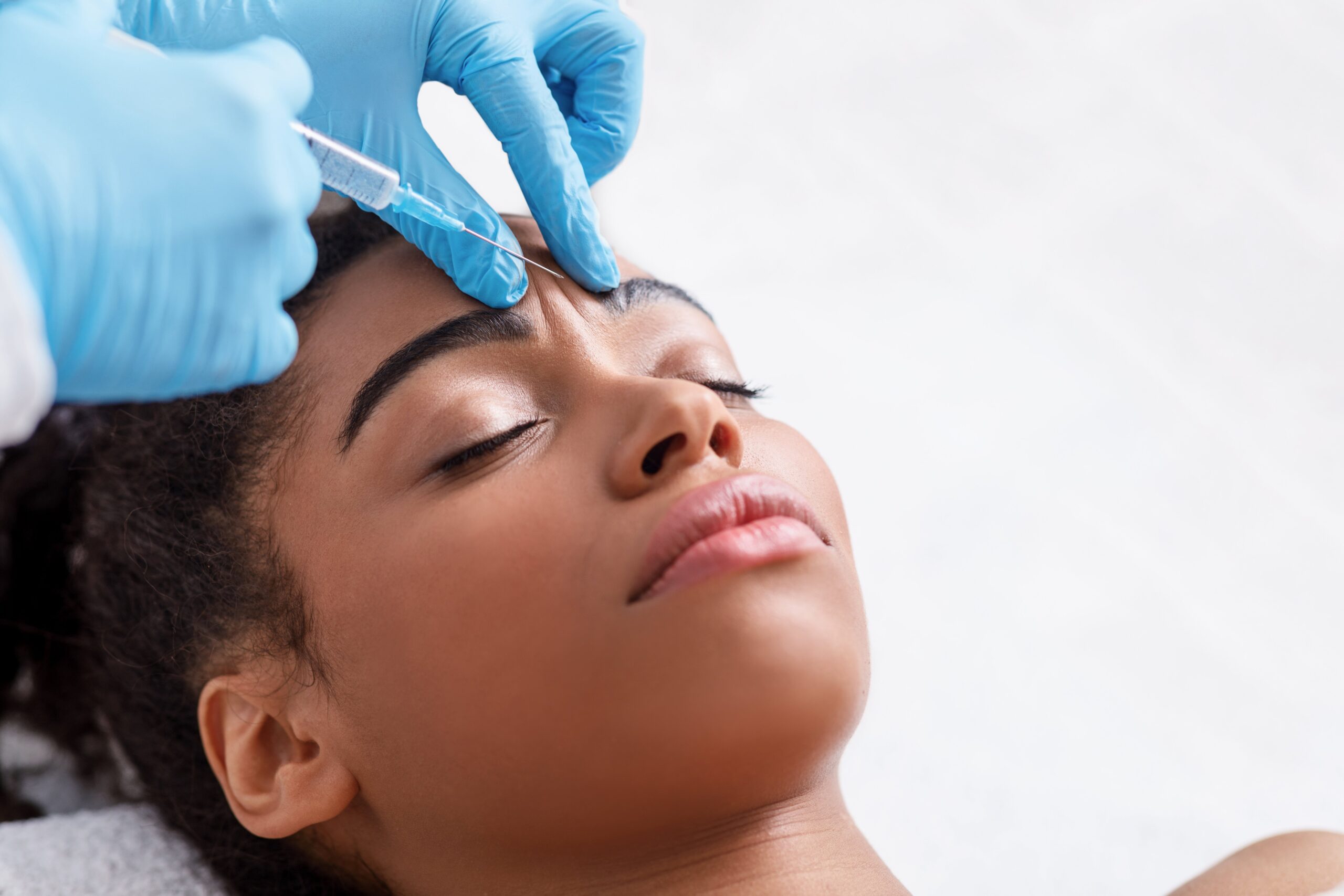Frequently Asked Questions about Botox Treatment
Appropriate Age for Botox: Botox preparations are typically studied for individuals between the ages of 18 and 65. It is generally recommended to be above 18 years of age, or preferably above 21, to receive Botox as an approved age range.
Botox is a type of Botulinum toxin, which is a toxin produced by specific species of bacteria. The term “Botox” is a trade name owned by the company Allergan, which initially researched, standardized, and manufactured this toxin for cosmetic purposes. Presently, the term “Botox” is commonly used to refer to all forms of Botulinum toxins, even beyond Allergan’s specific product.
To learn more, follow our articles on Botox.
Types of “Botox” (Botulinum Toxins): Currently, all the Botulinum toxins available for cosmetic use fall under Botulinum toxin type A. The specific product manufactured by Allergan is referred to as “Botox.” Other brands in the market include Dysport by Galderma (now part of Nestle), Xeomin by Merz, and Jeuveau by Evolus. The pronunciation and spelling of Jeuveau can be quite complicated, but for the sake of simplicity, we will use the term “Botox” generically.
Mechanism of Action: No, all types of “Botox” toxins function in the same way by relaxing the injected muscles. The onset of action may vary, with some preparations starting to work within a few days, while others may take up to one week. The duration of their effects also varies, typically lasting between 3-4 months in most individuals. However, it’s important to note that some people may metabolize the toxin faster, experiencing its effects for only 2 months, while others may have longer-lasting results of 5-6 months. Recently, a new toxin called Daxxify by Revance has received approval and shown in clinical studies to last for 6-9 months. Further information on its cost and real-life efficacy is still awaited.
No, Botox cannot replace surgery for individuals who would benefit solely from surgical procedures. While some individuals may believe that Botox is a cure-all solution, it is important to understand that surgery still plays a crucial role in certain cases where it provides the most favorable outcome.
Most permanent lines or wrinkles develop as a result of untreated expression lines over a period of years and decades. This emphasizes the importance of starting treatment early and maintaining regular and consistent care. While some permanent lines may have a hereditary component, it is relatively rare for individuals to be born with them.
Maintaining Natural Expressions: That is a valid concern. We have had discussions with some of the actors we treat, including those working on Broadway shows, and they assure us that Botox does not hinder their job performance as artists. For example, frown lines between the eyebrows serve no meaningful purpose. They only contribute to an older and less attractive appearance. One can convey wisdom and engage in animated conversations without the need to showcase these lines, in my opinion!
Understanding Pricing and Authenticity: The prices you mentioned seem highly unrealistic. In the case of Botox originating from the USA, it may be for a very small quantity, such as 15-20 units or less, aiming to attract individuals for additional services. This marketing strategy is not uncommon. If the Botox is not of US origin, the potency and authenticity of the product become questionable. Products sourced internationally often go through multiple intermediaries before reaching the patient, leading to a significant decrease in potency. Maintaining the cold chain is crucial from the manufacturing process to the final injection. When we order Botox, it is shipped overnight on dry ice and immediately frozen until it is reconstituted, ensuring the preservation of potency.
Concerns with Handling and Potency: Traveling healthcare professionals who visit multiple locations in a short span of time may encounter issues with maintaining the potency of Botox. Proper handling and cooling of the product between locations are essential for optimal effectiveness. Patients may experience that their Botox treatment is not as effective if the product has not been handled appropriately during transportation.
Restricted Distribution and Prescription Requirement: Botox is classified as a prescription medication. Therefore, manufacturers can only sell it to licensed healthcare professionals who have the authority to prescribe and administer such drugs. This typically includes physicians, physician assistants, and nurse practitioners working under the supervision of a licensed physician. It is important to note that Galderma, for example, does not sell some of their injectable products to dental professionals in New Jersey and New York. The specific regulations regarding who can purchase Botox may vary by individual states.
Individuals with certain muscle and nerve-related conditions should avoid Botox treatment. Examples include myopathy, myasthenia, multiple sclerosis, and other similar conditions. Pregnant or breastfeeding individuals should also refrain from receiving Botox injections. Additionally, individuals with heavy and low-set brows and small-set eyes may be at a higher risk of experiencing eyebrow drooping if the forehead is treated or if an excessive dose is administered.
Botox is not an effective treatment for scars. Its mechanism of action involves relaxing muscles rather than directly addressing scar tissue. Alternative treatments and therapies may be more appropriate for scar management.
Bell’s Palsy is characterized by facial nerve paralysis, typically affecting one side of the face. Botox primarily works by relaxing muscles upon injection. Since Bell’s Palsy involves facial muscle paralysis, Botox does not have a significant role in treating this condition.
It is believed that the pricing of prescription drugs, including Botox, differs between countries due to government regulations. In Europe and many countries like Canada, prescription drug pricing is controlled by the government. In contrast, the pricing of Botox and other similar products in the USA is not strictly regulated by the government. As a result, the cost of Botox treatment in the USA may be higher compared to other countries.



 A: Understanding Pricing and Authenticity: The prices you mentioned seem highly unrealistic. In the case of Botox originating from the USA, it may be for a very small quantity, such as 15-20 units or less, aiming to attract individuals for additional services. This marketing strategy is not uncommon. If the Botox is not of US origin, the potency and authenticity of the product become questionable. Products sourced internationally often go through multiple intermediaries before reaching the patient, leading to a significant decrease in potency. Maintaining the cold chain is crucial from the manufacturing process to the final injection. When we order Botox, it is shipped overnight on dry ice and immediately frozen until it is reconstituted, ensuring the preservation of potency.
A: Understanding Pricing and Authenticity: The prices you mentioned seem highly unrealistic. In the case of Botox originating from the USA, it may be for a very small quantity, such as 15-20 units or less, aiming to attract individuals for additional services. This marketing strategy is not uncommon. If the Botox is not of US origin, the potency and authenticity of the product become questionable. Products sourced internationally often go through multiple intermediaries before reaching the patient, leading to a significant decrease in potency. Maintaining the cold chain is crucial from the manufacturing process to the final injection. When we order Botox, it is shipped overnight on dry ice and immediately frozen until it is reconstituted, ensuring the preservation of potency.